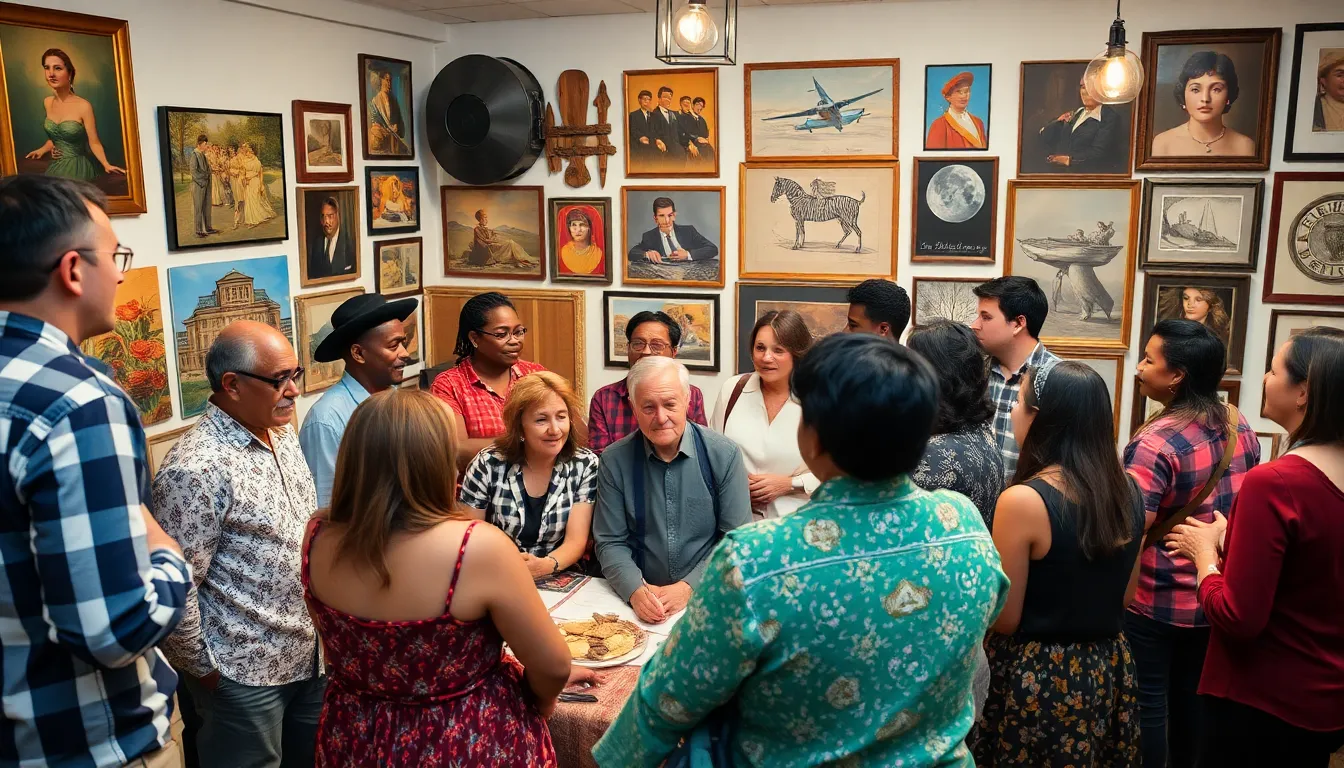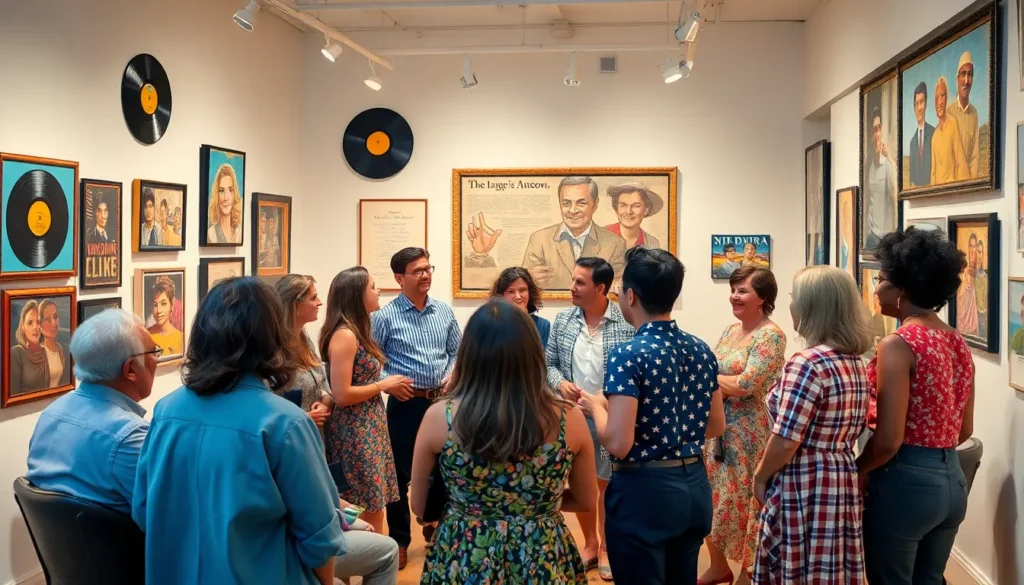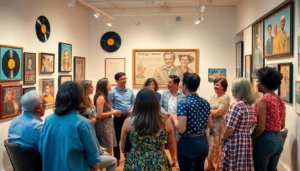Table of Contents
ToggleCultural retrospectives are like time machines for the mind, whisking us back to moments that shaped our world. They offer a delightful mix of nostalgia and insight, allowing us to laugh, learn, and maybe even cringe at the past. From iconic fashion trends to unforgettable music hits, these retrospectives remind us just how far we’ve come—and how some things never change.
Understanding Cultural Retrospectives
Cultural retrospectives act as windows into significant moments in various cultures. They facilitate a deeper appreciation of how historical events shaped modern society.
Definition and Importance
Cultural retrospectives refer to explorations of past cultural milestones. They encompass important artistic, social, and political events that define a culture. Recognizing these retrospectives provides valuable insights into societal evolution. They also emphasize the enduring themes that resonate through time. Understanding such aspects cultivates a stronger connection to cultural identity and heritage.
Key Elements of Cultural Retrospectives
Key elements of cultural retrospectives include nostalgia, context, and interpretation. Nostalgia evokes an emotional response, connecting individuals to their collective memory. Context encompasses the background in which these events occurred, offering a broader understanding. Interpretation involves analyzing cultural artifacts, such as music, fashion, and art, to extract meaning. Together, these elements help maintain cultural relevance and foster ongoing dialogue about identity and values.
Historical Context

Cultural retrospectives hold significant value in understanding history. They reveal important truths about the evolution of societies and their values.
Evolution of Cultural Retrospectives
Cultural retrospectives emerged as a method of reflecting on past trends and notable events. They began gaining traction in the late 20th century, driven largely by media and technology advances. With each decade, these retrospectives adapted, integrating new art forms and disciplines. Various cultural movements, such as the counterculture of the 1960s and the digital explosion in the 2000s, influenced their development. These glimpses into history not only served as a record but also sparked conversations about social values.
Notable Examples Through History
Numerous examples illustrate the impact of cultural retrospectives throughout history. The Harlem Renaissance offered a profound exploration of African American culture, showcasing art, literature, and music influences. The 1980s revival of interest in past fashion trends highlighted how nostalgic aesthetics shape identity. Similarly, the rise of #ThrowbackThursday on social media created a platform for collective memory sharing. Each example delineates how retrospectives foster understanding and appreciation of cultural evolution across generations.
Contemporary Applications
Cultural retrospectives find relevance in various fields today, enriching understanding and appreciation of history through multiple lenses.
Cultural Retrospectives in Art
Artistic expression often draws on historical themes to evoke emotion and provoke thought. Many contemporary artists incorporate elements from past movements, like Impressionism or Surrealism, to comment on modern issues. For instance, famous artists exhibit works that reference significant social changes, enabling viewers to engage with historical narratives. By presenting these themes, artists bridge the past and present, fostering connections to cultural identity. Retrospectives in art invite audiences to explore the evolution of styles, techniques, and meanings across time, enhancing cultural awareness.
Cultural Retrospectives in Media
Media plays a crucial role in shaping collective memories and perceptions of history. Documentaries and series frequently revisit pivotal moments, offering insights that resonate with current societal contexts. Many streaming platforms now curate collections highlighting significant events, encouraging audiences to reflect on their impact. By utilizing archival footage and interviews, media retrospectives illuminate the narratives that define cultural identity. Engaging storytelling fosters dialogue about how past events influence present-day values and social issues, reinforcing the importance of historical context in media representations.
Challenges and Critiques
Cultural retrospectives face several challenges and critiques that impact their effectiveness and inclusivity.
Representation Issues
Representation remains a significant concern within cultural retrospectives. Often, dominant narratives overshadow diverse voices and experiences. Marginalized communities frequently encounter underrepresentation, resulting in incomplete portrayals of their histories. Inclusive retrospectives incorporate multiple perspectives, allowing audiences to access a richer understanding of culture. Failing to address representation can perpetuate stereotypes and limit cultural appreciation. Acknowledging various narratives fosters a more authentic dialogue about cultural identity.
Accessibility and Audience Engagement
Accessibility challenges can limit the reach of cultural retrospectives. Some audiences may find language, format, or content exclusive, hindering engagement. Educational institutions or cultural organizations often tailor retrospectives to specific demographics, which can alienate broader audiences. Engaging narratives and user-friendly formats enhance accessibility. Implementing interactive elements invites participation from diverse groups, enriching collective memory. Ultimately, accessible retrospectives encourage wider discussions about cultural relevance and societal values.
Conclusion
Cultural retrospectives play a vital role in shaping understanding and appreciation of history. They bridge the past and present while fostering connections to cultural identity. By highlighting significant moments and diverse perspectives, these retrospectives encourage deeper conversations about societal values and evolution.
As they continue to evolve in the digital age, the importance of inclusivity and accessibility cannot be overstated. Engaging narratives and interactive formats can help ensure that cultural retrospectives resonate with broader audiences. Ultimately, embracing the richness of diverse experiences will enhance the collective memory and foster a more comprehensive understanding of culture and identity.



